Kalamurina Sanctuary – Under the Shade of a Coolibah Tree

We had planned to visit the Australian Wildlife Conservancy’s Kalamurina Sanctuary earlier in 2011, but were thwarted by the weather and other commitments. So when we were offered to act as caretakers on the sanctuary for five weeks over the Christmas/New Year period, we jumped at the opportunity.
THE DRIVE IN
We had reached Mungerannie Hotel on the Birdsville Track (see previous blog), and were ready for the final 60km drive west to the sanctuary. Sounds easy, and normally it would be, except that an inch of rain had fallen a few days before our arrival, transforming the dry and dusty track through Cowarie Station to the sanctuary into a boggy challenge. We were fortunate that Kalamurina’s manager Mark McLaren drove out to Mungerannie to guide us in.
The first half of the trip in was fine, a bit muddy, but nothing too bad. We started to relax. Then Nirbeeja hopped out to close a gate on Cowarie, and Mark just gave her a smile and in his quiet way said “now the fun starts”. I guess you could call it fun! The next 15km or so were spent churning our way through one muddy drive-around after another, constantly hoping we wouldn’t sink to our axles in the wet clay, trying to maintain enough momentum to sail through the deeper stretches of mud. The main track was obviously too boggy to even contemplate driving along. Nirbeeja and I were both engaged keeping one eye on the track/mud immediately ahead, and another on Mark’s car disappearing into a cloud of mud and dust in the distance, doing our best to follow his lead. Our windscreen, covered in a combination of mud and dust, didn’t make life any easier. We constantly criss-crossed the main track in, heading one way then another following the most passable route. Thank goodness for Mark – we would have been history without his guidance!
We spent the next few days settling in to Kalamurina’s cosy cottage with its wonderful new air conditioning unit, generally getting the lay of the land for our caretaking, and getting to know Tess and Mark. They departed in early December for a well-earned break, leaving us alone for five weeks on the enormous property.
A BRIEF BACKGROUND TO KALAMURINA SANCTUARY
Kalamurina Sanctuary is by any measure a large property. It covers an area of around 670000 hectares, or in terms of distance, it is roughly 120km east to west and 60km north to south. It is bigger than many countries.
Lake Eyre forms its western boundary, the Simpson Desert its northern, the Tirari Desert lies to its south, and the Sturt Stony Desert lies to its east. In other words, there is tough country all round. The region is classified as arid but occasionally heavy rains fall either directly on the sanctuary or on the channel country which drains eventually into Lake Eyre, and Kalamurina springs into life. And that is exactly what has happened over the past couple of years. The Warburton Creek, one of the main water courses draining into Lake Eyre, passes directly through Kalamurina and close to the homestead. We were fortunate to see the Warburton holding plenty of water and teeming with bird-life.

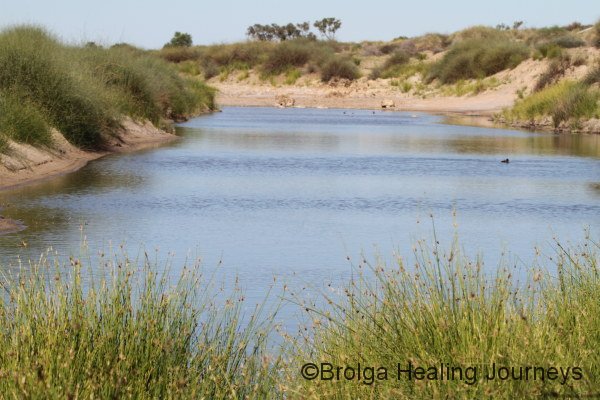

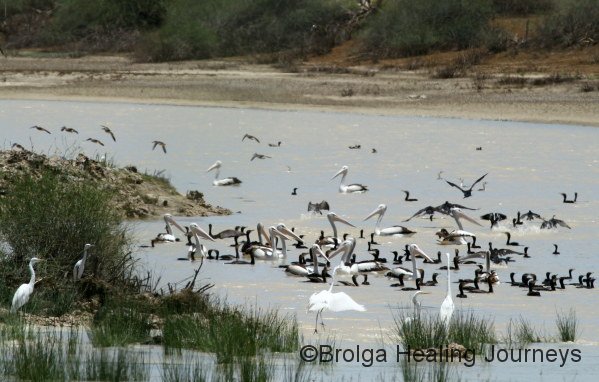
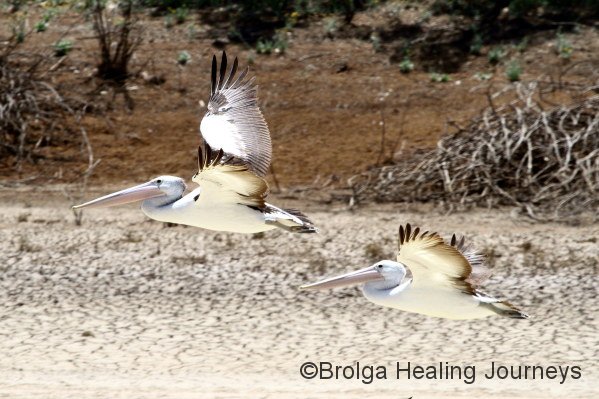
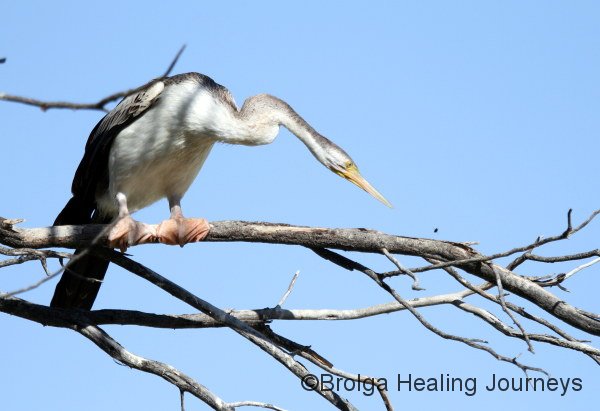


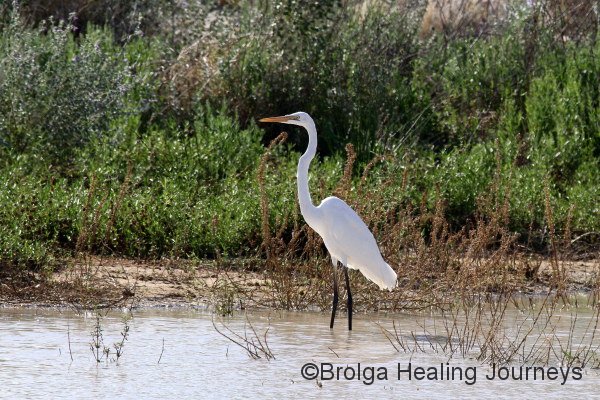
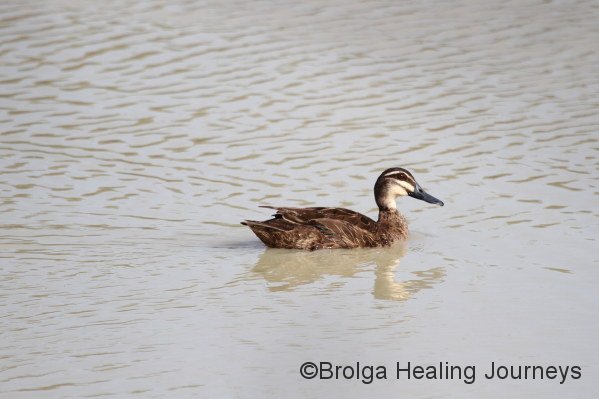
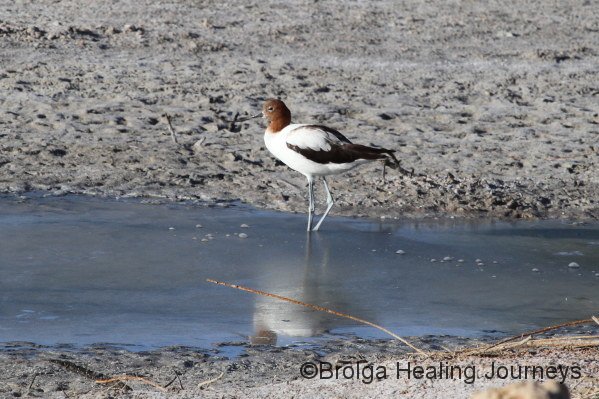
Kalamurina was a cattle station prior to its purchase by the AWC in 2007. The sanctuary, in conjunction with the Lake Eyre National Park, the Simpson Desert Regional Reserve and national parks adjoining that to the north, forms a continuous area dedicated to nature conservation bigger than Tasmania. Given that Australia’s arid regions have a poor record for mammal extinctions in the period since white settlement, this is good news indeed for our wildlife.
Kalamurina is home to several rare Australian mammals such as the Crest-tailed Mulgara, the Kultarr, the Kowari, and various Hopping mice. Most of us are unaware of their existence, let alone the fact that they are struggling to survive. On cattle stations their habitat is constantly under threat, but on Kalamurina it can recover now that stock has been removed.
Kalamurina is also home to an enormous variety of birds, a good many of which we were privileged to see during our stay, including the rare Eyrean Grass Wren and a huge number of waterbirds. It also houses a large variety of reptiles, and even a good range of fish species, quite surprising given the sanctuary’s location in Australia’s arid interior.
We witnessed first hand the remarkable recovery underway on Kalamurina. The vegetation is varied and healthy, no doubt benefitting from the rains and river flows, but also from the absence of cattle. We found it interesting comparing the healthy, diverse vegetation of Kalamurina with the relative desolation of the cattle stations we drove through in the district. It was a joy for us to see native grasses on Kalamurina, green and covered in seed, and to see the native birds feeding upon them. The Coolibah trees, of Waltzing Matilda fame, line Kalamurina’s watercourses, and now that cattle are no longer grazing on the property, Coolibah saplings are prospering and a natural process of revegetation underway. We would love to see the sanctuary ten years from now.

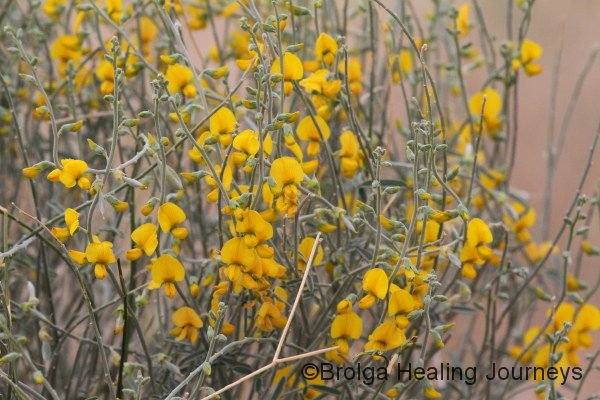
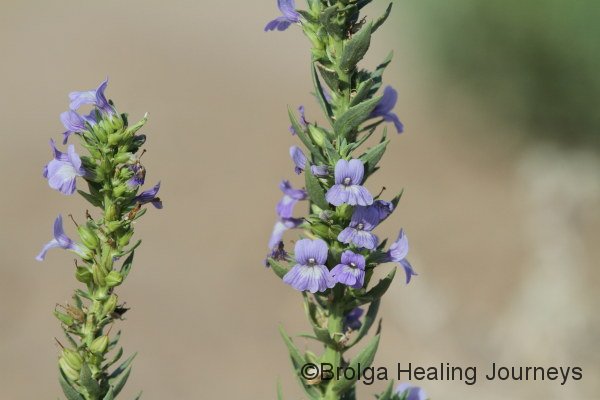

OUR EXPERIENCES ON KALAMURINA
Summer is probably not the easiest time to see Kalamurina or to work on the sanctuary. For instance, we experienced a two week period when the temperature reached at least 40 degrees each day, peaking at 47.8. We did grow accustomed to the heat, to the point where the low 40s felt okay, but the mid 40s, usually accompanied by a hot wind, limited what we could do outside. Thank goodness for the air conditioner installed in the cottage shortly before our arrival (thanks AWC!), which provided a cool retreat in the heat of the day.

Because of the conditions, we limited our travel across the sanctuary during the time we were caretaking. After all, you wouldn’t want your vehicle to break down 80km from help in 45 degree heat. Nevertheless, we had some memorable experiences around the homestead area and along the Warburton Creek. We often visited the creek to marvel at the wealth of bird-life along its bank.
We performed most of our caretaking duties early in the morning, when temperatures were mildest (eg mid 30s). These included maintenance work on the sanctuary airstrip, general maintenance of sanctuary infrastructure and clearing vegetation around buildings to reduce fire risk.
Each Thursday, we collected Kalamurina’s mail. So what, you might think. Well, mail collection for us was an absolute novelty, because mail was delivered by light plane to the airstrip on the neighbouring station, around 10km from home. We had read about such mail services but never dreamt that we would get to experience one. We had the fun of receiving some personal mail via ‘inland airmail’ (thanks Mum!) and Nirbeeja ordered some goods just to experience the thrill of having them arrive by plane. Unfortunately, we never did get to meet our local postie; by the time we’d get to the airstrip he was long gone, en route to the next remote airstrip. The outback mail run servicing Kalamurina and other remote properties is reportedly the longest in the world.
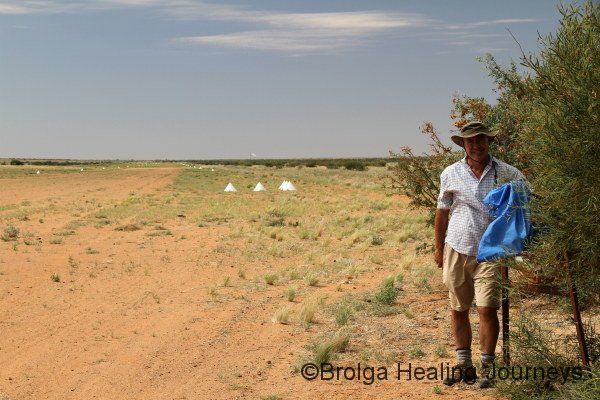
We’ve already mentioned Kalamurina’s birdlife, but several species really stood out for us. Whenever we walked outside we could look up and virtually be guaranteed to see a number, sometimes dozens, of Black Kites circling overhead. Perhaps they thought we were about to collapse in the heat, and were anticipating an easy meal. The Black Kites were commonplace, but we really grew to appreciate these beautiful raptors and their effortless soaring on the thermals.
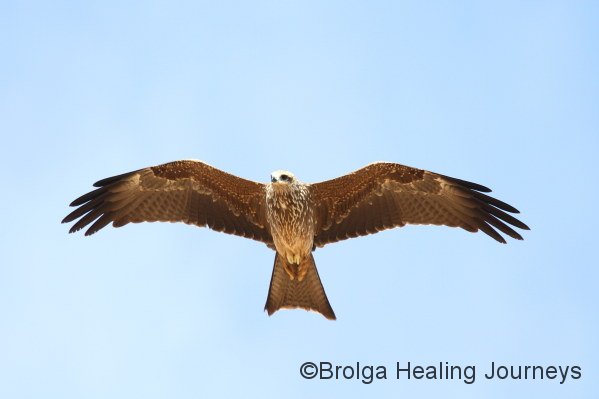
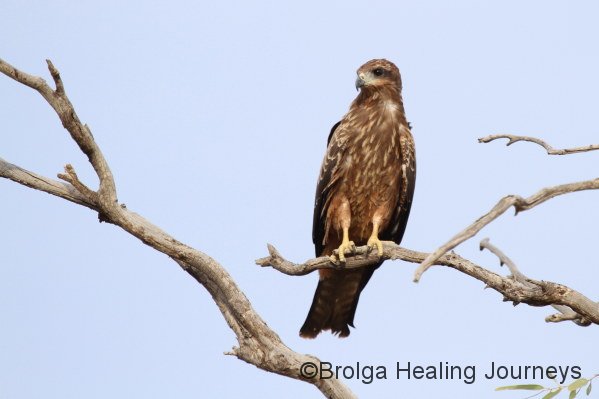

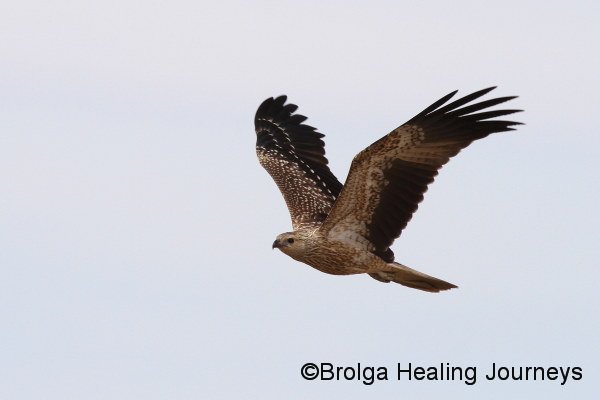
A family of five Wedge-tailed Eagles also lives in the homestead region; two parents and their three juvenile offspring, known affectionately by Tess and Mark as the Three Amigos. We were always excited to see one or more of the Amigos nearby, or their parents. The juveniles have the beautiful reddish-brown plumage of the eagles in their first year, which will grow darker as they mature.
In fact, we were fortunate to see many different Wedge-tailed Eagles across Kalamurina and were particularly happy to see them prospering away from Australia’s highways, where all too many of them now live (and often die) on a diet of roadkill. We saw two Wedge-tailed Eagles nests built in Coolibah trees, relatively close to the ground. The nests were simply enormous and gave us a good indication of the size of the adult birds. Oh to see a nest containing eagle chicks!
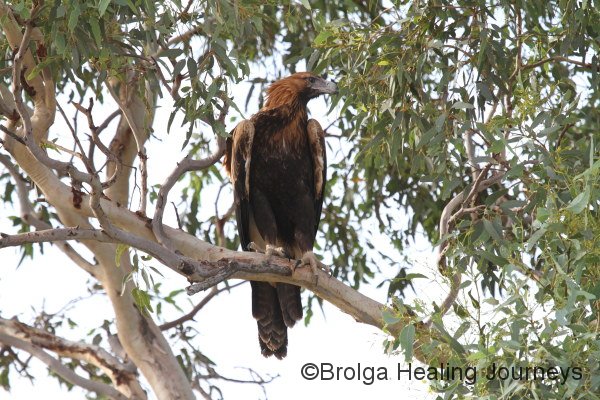

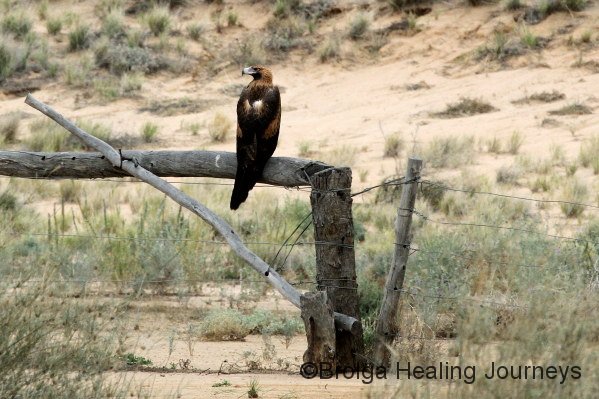
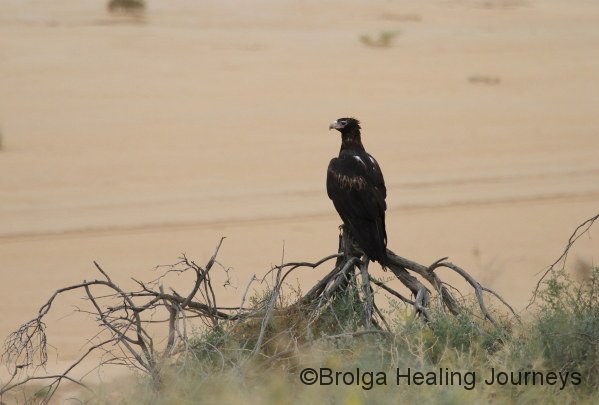
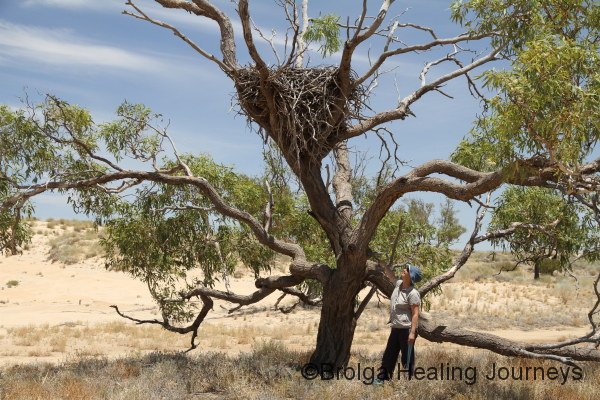
We encountered many different birds at Kalamurina, but the most common around the homestead were Galahs, Zebra Finches, Little Corellas, Red-Backed Kingfishers, Rainbow Bee-eaters and Blue Bonnet Parrots. We saw our first Red-Necked Avocets and Pink-eared Ducks. We have listed the species we identified at the end of the blog for any bird enthusiasts.

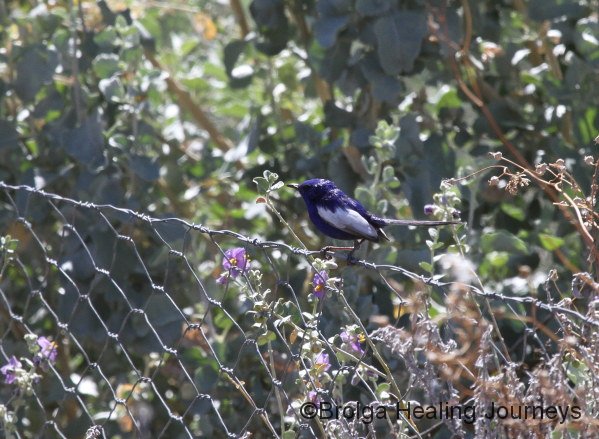
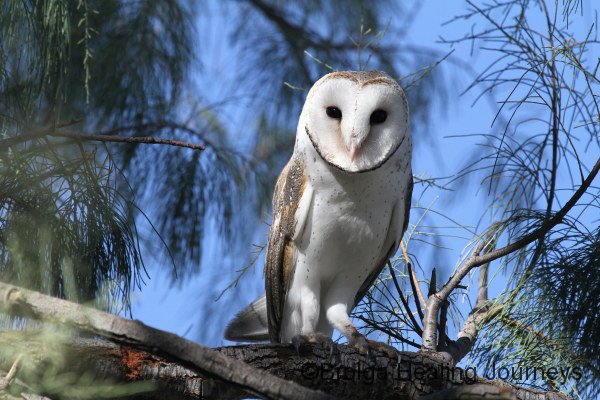

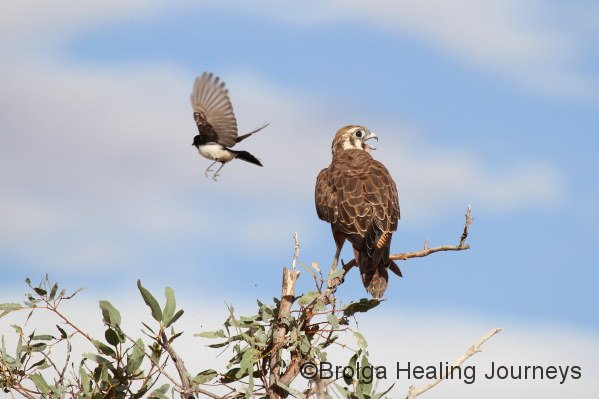
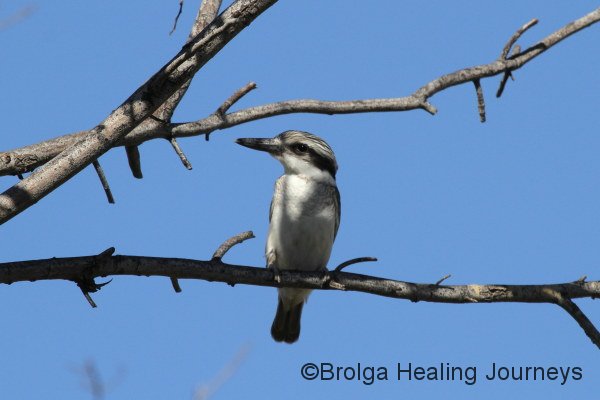

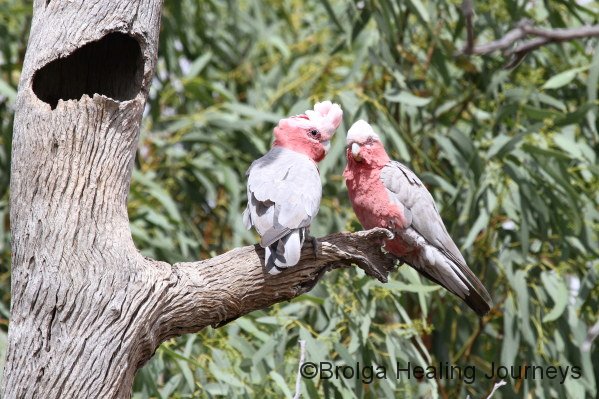

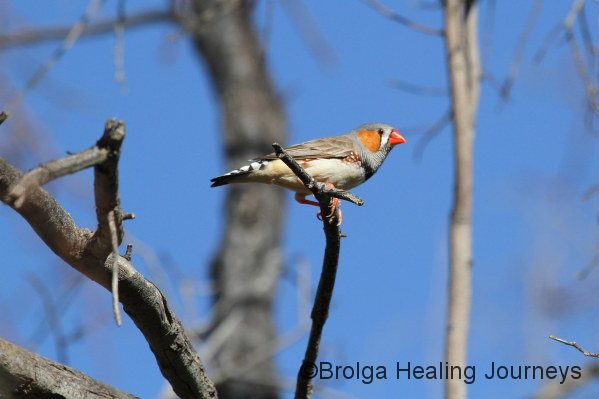
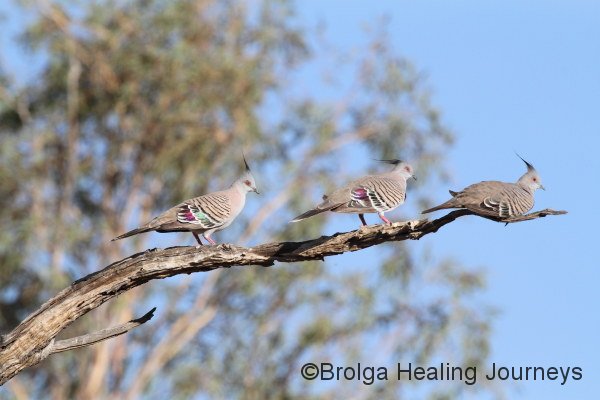

There were a number a beautiful pale Sand Goannas, or Bungarras, in the vicinity of our cottage. We had a surprise visit one day when a smaller goanna sought refuge from its larger ‘friend’ by dashing into the cottage when I opened the door. After much searching, we located the fugitive in the bathroom, and eventually managed to coax it back outside. Only at Kalamurina!
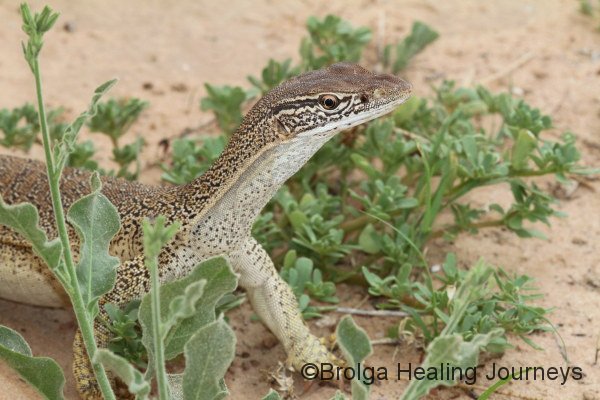
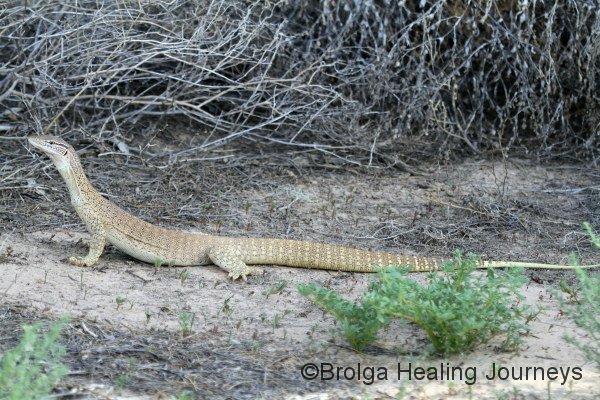
Kalamurina is renowned for its sunsets, and we learned why during our stay. Viewed from the top of one of the sand dunes, they were simply breathtaking. We also witnessed a sunset phenomenon we hadn’t previously encountered; often there would be little colour in the western sky, but the eastern sky was lit up beautifully, almost as though a sunrise were occurring.
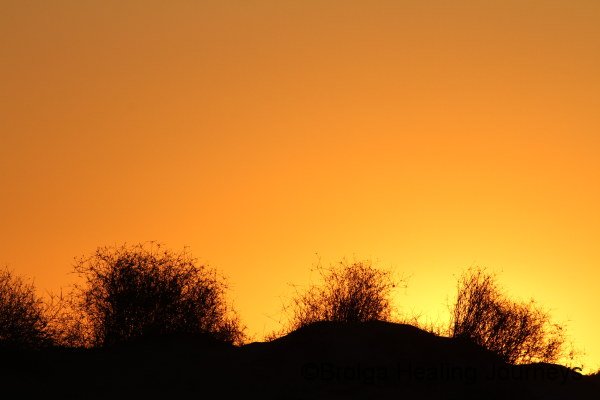
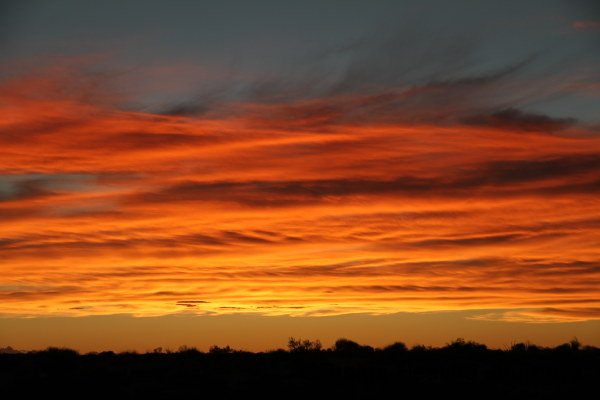
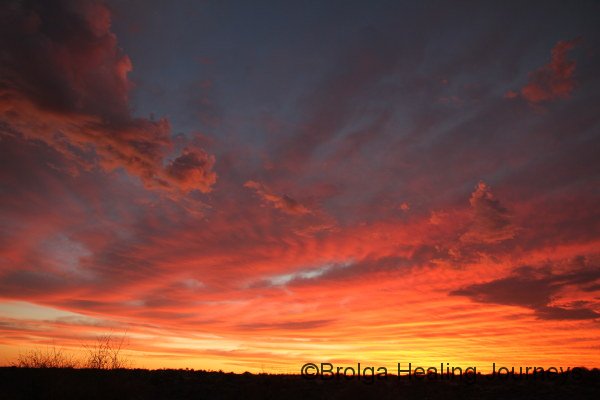
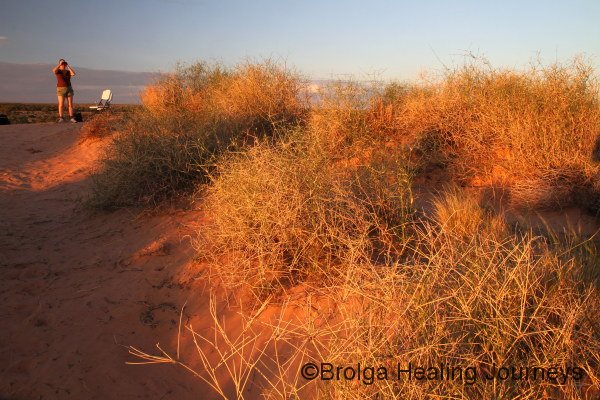
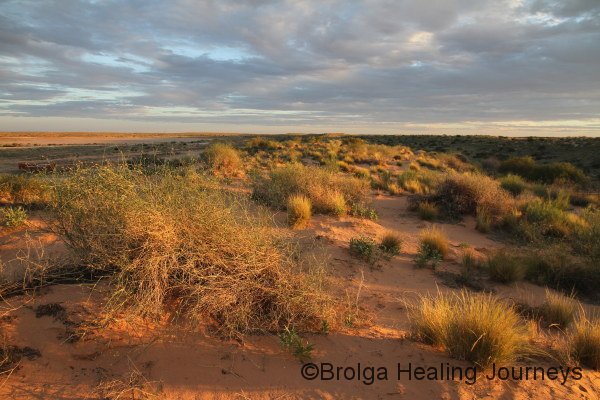
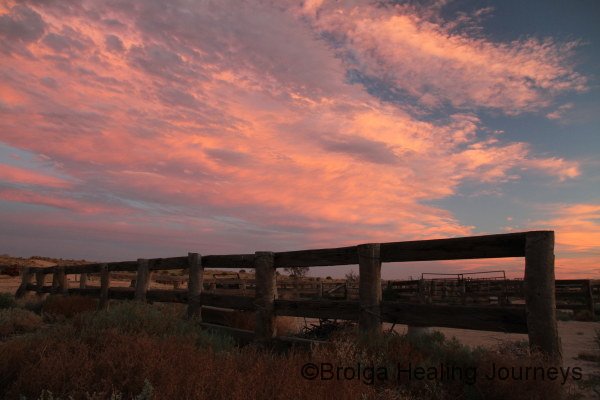

Following their return of Kalamurina, Tess and Mark took us exploring further afield on Kalamurina. We headed across to White Bull Bore with Mark to repair a leak in the waterline, but en route visited the Blaze Tree (a tree with a blaze scar left by the early surveyor James Lewis in 1874-75 ), travelled up Kalamurina sand dune, rising 30 metres above the surrounding land, and saw many beautiful wetlands both along the Warburton Creek and elsewhere. The 50km trip across to the bore gave us a better appreciation of the size of the property, especially when we realized that we hadn’t quite made it to the halfway mark!
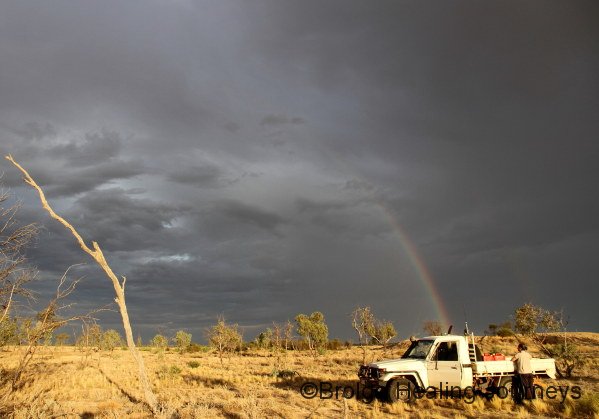
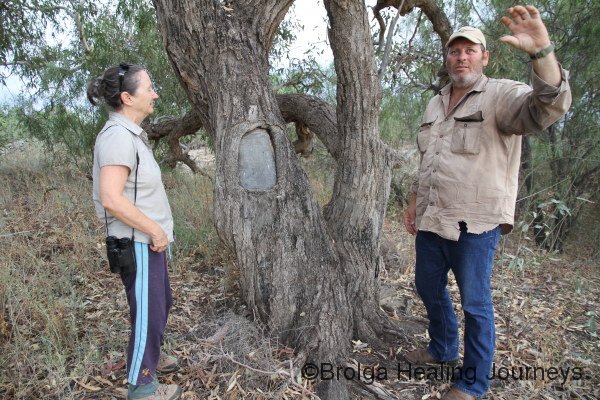
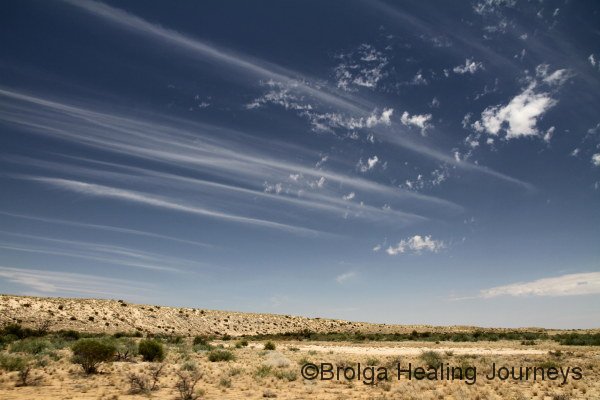
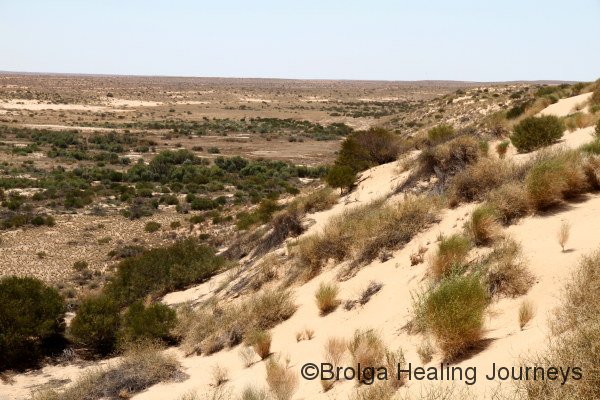
The following day we ventured out to Lake Mia Mia with Tess to collect eagle pellets for study. The pellets – comprised of indigestible material regurgitated by the eagles – were enormous. Some were the size of two chicken eggs end-on-end.
Lake Mia Mia was a beautiful area, a vast flat inland lake. We could see water in the far distance and birds on the lake, so I attempted a walk closer to the lake for some photos. Silly me. This idea was soon abandoned given the heat (mid 40s) and the distances involved (the lake didn’t seem to be getting any closer).
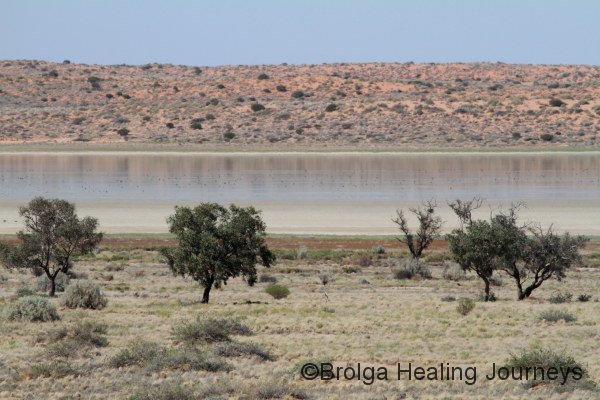
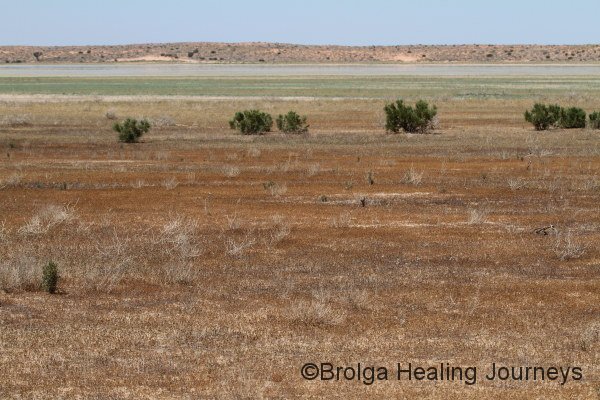

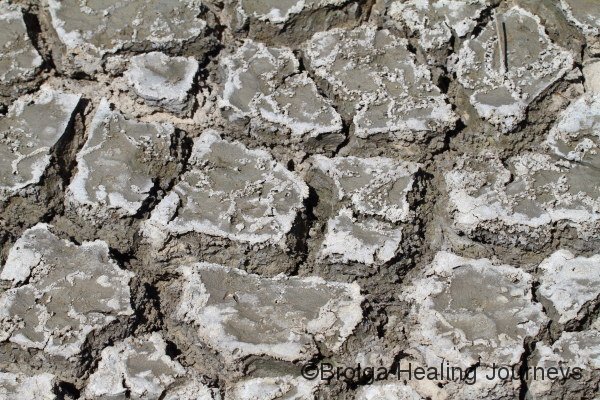
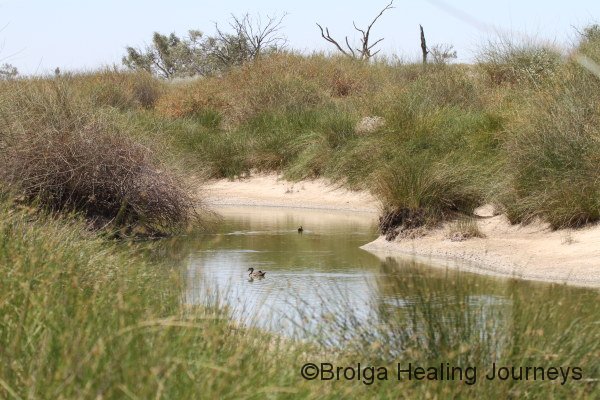
We left Kalamurina hoping to return one day for another stint of caretaking or to help out (in cooler months) with survey work. It was six weeks since we had done any food shopping, so our food supplies were pretty low.
We would like to thank the AWC for giving us the opportunity to work as caretakers on Kalamurina Sanctuary. It was an unforgettable experience in a uniquely beautiful environment. We would also like to thank Tess and Mark for everything they did for us. In Tess and Mark, the AWC has two absolute outback gems.
Peter & Nirbeeja
January 2012
BIRD SPECIES OBSERVED DURING OUR STAY AT KALAMURINA
Chestnut-rumped Thornbill
Wedge-tailed Eagle
Swamp Harrier
Black-shouldered Kite
Whistling Kite
Black Kite (hundreds!)
Australian Reed-Warbler
Australian Owlet Nightjar
Grey Teal
Pacific Black Duck
Hardhead
Australian Wood Duck
Pink-eared Duck
Australasian Darter
Intermediate Egret
Eastern Great Egret
White-faced Heron
Black-faced Woodswallow
Australian Magpie
Little Corella
Galah
Black-faced Cuckoo Shrike
White-winged Triller
Black-fronted Dotterel
Banded Lapwing
Diamond Dove
Crested Pigeon
Little Crow
Australian Raven
Horsfield’s Bronze Cuckoo
Zebra Finch
Brown Falcon
Nankeen Kestrel
Australian Hobby
Black Falcon
Red-backed Kingfisher
Sacred Kingfisher
Welcome Swallow
Fairy Martin
Tree Martin
Whiskered Tern
Silver Gull
Gull-billed Tern
Caspian Tern
Eyrean Grasswren
Variegated Fairy-wren
White-winged Fairy-wren
Brown Songlark
Spiny-cheeked Honeyeater
Orange Chat
Crimson Chat
White-plumed Honeyeater
Rainbow Bee-eater
Magpie-lark
Australasian Pipit
Crested Bellbird
Australian Pelican
Little Pied Cormorant
Great Cormorant
Little Black Cormorant
Pied Cormorant
Hoary-headed Grebe
Australasian Grebe
White-browed Babbler
Budgerigar
Blue Bonnet
Cinnamon Quail-thrush
Eurasian Coot
Dusky Moorhen
Purple Swamphen
Black-tailed Native Hen
Black-winged Stilt
Red-Necked Avocet
Grey Fantail
Willie Wagtail
Southern Boobook Owl (call only)
Yellow-billed Spoonbill
Glossy Ibis
Straw-necked Ibis
Eastern Barn Owl
House sparrow (intr.)
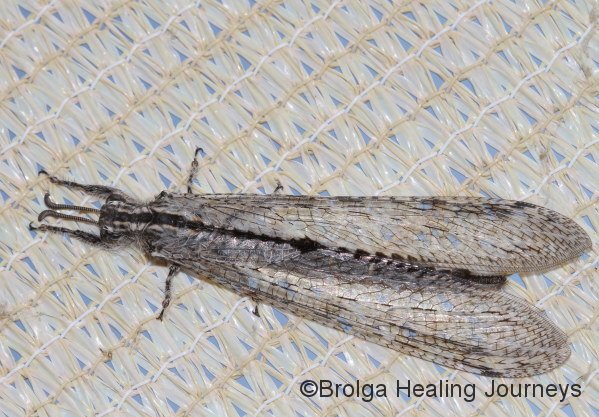
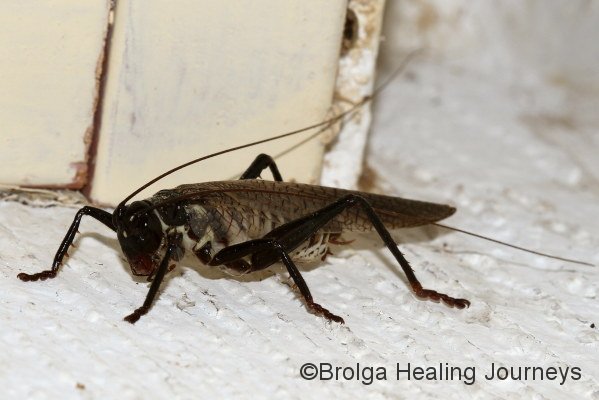
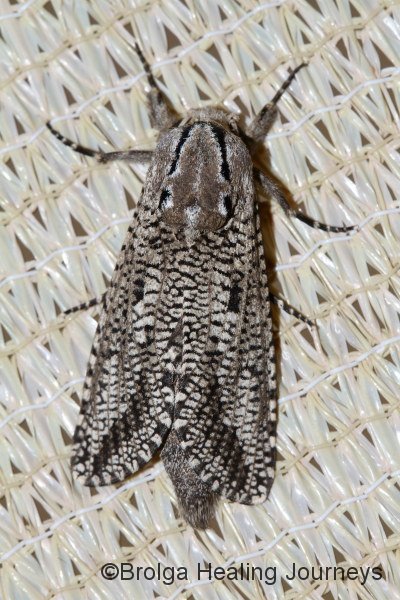
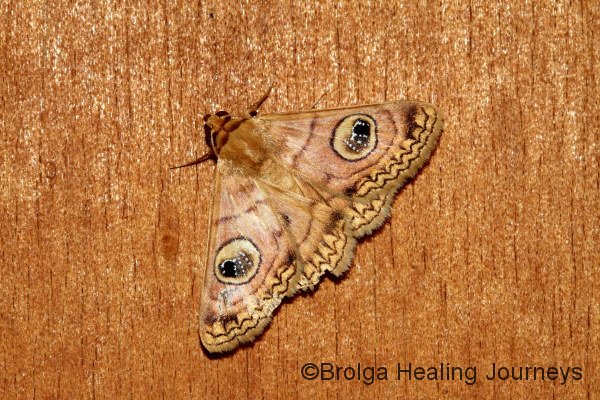
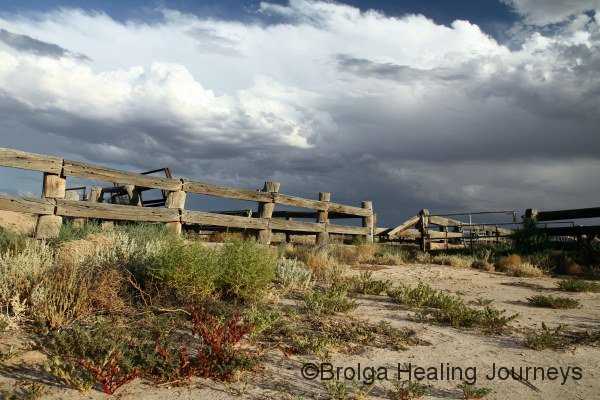
To learn more about Kalamurina Sanctuary and the wonderful work being done there by the Australian Wildlife Conservancy, visit the AWC’s website at www.australianwildlife.org











